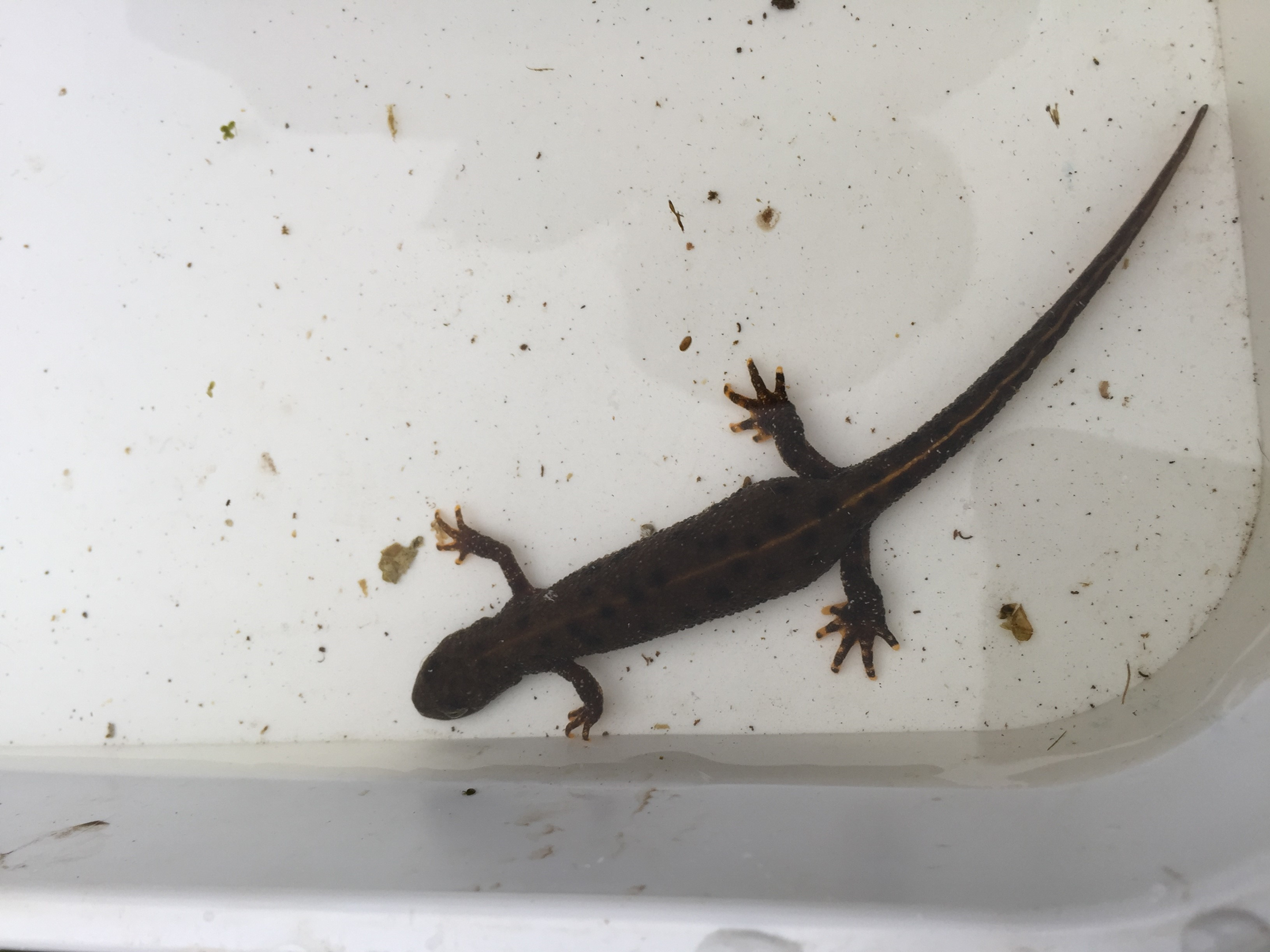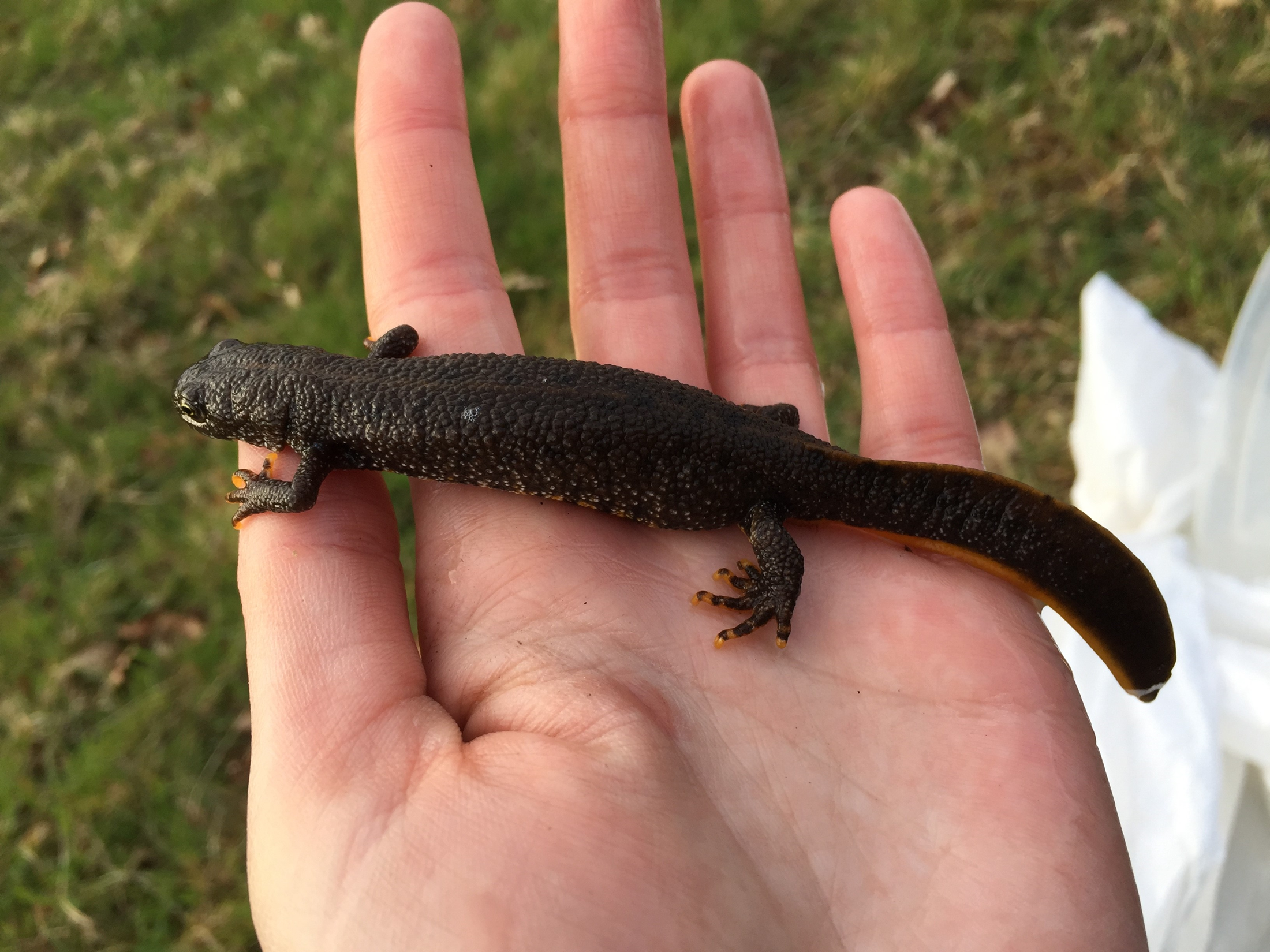District Licensing Scheme for Great Crested Newts
Great crested newt populations have declined significantly over recent decades due to habitat loss. The species spend most of their life on land in habitats such as woodland, hedgerows, grassland and scrub, but return to freshwater ponds in the spring to breed. They are generally found within 500m of ponds, although they can travel much further than this – up to 1.6km.
Great crested newts and their habitats are protected under UK and European legislation, therefore planning authorities must consider the species as part of the planning application process. Where impacts on newts may arise, developers should obtain a licence to make their activities lawful and ensure that the impact on the species will be mitigated. An evidence-based 'Impact Risk Zone' map (https://naturespaceuk.com/district-licensing/impact-map/) has been published that shows the different risk zones for impacts on great crested newt. The Risk Zone map for the Winchester District can be seen below.
Winchester City Council holds a Great Crested Newt District (or “Organisational”) Licence, designed by NatureSpace and granted by Natural England, which provides an alternative licensing option for developments.

|

|
-
What is District Licensing?
District licensing benefits great crested newts by creating new or better habitats in targeted areas to increase and re-connect populations at the landscape scale. For developers, it’s a simpler, quicker process than standard mitigation licensing because site specific surveys are not required, so there is no need to wait for the survey window in the spring. If great crested newts are found during development works, the licence permits moving the newts out of harm's way without having to stop works or apply for another licence.
Under the District License Scheme, developers make a ‘conservation payment’ towards offsite habitat delivery for great crested newts, delivered by the Newt Conservation Partnership who also take the responsibility for long-term monitoring and management. Compensation through the scheme delivers landscape-scale conservation for great crested newts. To learn more about the conservation strategy and read case studies on habitat delivered by the scheme, visit NatureSpace https://naturespaceuk.com/conservation/
-
Impact Risk Zone
Natural England have produced a guidance document for all planning authorities using the NatureSpace District Licensing Scheme – the most recent version of this guidance document can be found in the resources section of the NatureSpace website here. This explains that planning authorities can rely on the ‘Impact Risk Zone’ map to identify where great crested newts are likely to occur. In the higher risk areas (red and amber zones), planning applicants must set out how risks to great crested newts will be dealt with.
Development falling within the black zone (highest risk) is excluded from the scheme and any impacts will need to be addressed under the traditional licensing route. For the other zones, information requirements in support of applications will vary:
- Red and amber zones – in all cases, applicants must set out how risks to great crested newts will be dealt with (for example use of the DLS or traditional licensing route);
- Green or white zones – for cases where suitable GCN habitat is present onsite or has connectivity to suitable offsite habitat, information may be required to ascertain any impacts and how these will be dealt with.
You can read more about the Impact Risk Zone maps on the NatureSpace website https://naturespaceuk.com/district-licensing/impact-map/
The council’s planning team will also identify whether an application is within a risk zone.
-
Licensing Options
Three licensing options are available to developers in the Winchester District. These are:
- Joining the District Licence Scheme authorised by Winchester City Council; or
- Applying directly to Natural England for a licence post-planning; or
- Working with a registered consultant under the low impact class licence
-
The District Licensing route
If you wish to use the District Licence for your development, you must apply to NatureSpace before or during the planning process, otherwise amendments or variations to planning permission would be necessary and this can cause delays in project timescales. A free quotation can be provided.
Low impact developments (for example householders or infill) can make a single payment. Higher impact developments (for example more than two houses) will have a two-stage fee. Payments will vary depending on the location and nature of the proposals. To understand more about the process, visit the NatureSpace website.
The best way of joining the District License Scheme and becoming authorised by the council under the District Licence is to submit your NatureSpace Report or Certificate with your planning application so that the required planning conditions are attached to planning permission. This is by far the quickest and simplest route. However, if you already have planning permission and there is a reason why you’d like to consider joining the District Licensing Scheme, then there are options available to you – please submit an enquiry to NatureSpace to find out more.
Users of the District Licence scheme can also benefit from the integrated Biodiversity Net Gain package managed by NatureSpace and the Newt Conservation Partnership. More information on this can be found on the NatureSpace website.
-
The Natural England licensing route
Under the traditional licensing approach, developments that may impact great crested newt will require survey assessment to establish presence/likely absence of great crested newts. The need for survey can be based on the nature and scale of the proposals, the impact risk zone(s) the application site falls within, and the presence of suitable onsite habitat and ponds within 500m. Survey will also be required where there is uncertainty that newts will be affected.
Full great crested newt surveys of ponds within 500m of the development site would be required during the survey season from mid-March to mid-June (up to end of June for eDNA surveys) in line with Natural England standing advice and best practice. A population size class assessment (involving 6 survey visits throughout the survey season) may also be needed.
Where great crested newts are present, details of surveys, impact assessment, mitigation and compensation must be submitted to, and approved by, the planning authority as part of a planning application to comply with legislation and planning policies.
Once planning permission has been granted, a licence application would need to be prepared and submitted to Natural England, including details of impacts, mitigation, compensation, management and monitoring. This would need to demonstrate (amongst other things) that compensation would not be detrimental to the great crested newt population.
-
Low impact class licence route
In some low risk cases, a standard mitigation licence may not be necessary. A precautionary method of working under the supervision of a registered ecological consultant, including a toolbox talk for contractors and reasonable avoidance measures, may still be required under a low impact class licence (LICL) from Natural England, in order to avoid offences. A LICL can only be used for works that meet the following criteria:
- works conducted under supervision of a registered ecological consultant ('registered consultant')
- action has a low or temporary impact on great crested newts or their habitats
- sites are registered before work commences
Registered consultants have to be suitably qualified and experienced ecologists who have undergone training and meet certain assessment criteria/standards. The registered consultant will apply to Natural England for a LICL following the granting of any permission. Please note, planning approval does not guarantee the granting of a licence.
For cases of very low to negligible risk, works may proceed without any licence. However, if great crested newts are subsequently discovered, all works must cease, and Natural England or a suitably qualified and experienced ecologist must be contacted for advice before continuing. It is illegal to move great crested newts without a licence. A licence is likely to be required before works can re-commence. Depending on what works have been undertaken and what activities still need to take place, the District Licensing Scheme may not be relevant and a standard mitigation licence may be the only option. However, the District Licensing Scheme can be used post-planning, so an enquiry can still be submitted to investigate this option.
-
Are you a landowner interested in contributing to habitat creation under this scheme?
The Newt Conservation Partnership is keen to work with landowners under the District Licence Scheme to create new ponds and terrestrial habitat to sustain and expand great crested newt populations. They can also restore lost ponds or manage existing ones. Suitable locations include wet areas on clay (often poor for farming), ideally close to or within areas already known to support great crested newt. Landowners will receive annual payments over the habitat delivery period (minimum 25 years) that will compensate for any lost income.
